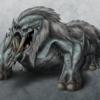Hi,
I have a mesh which is quika like a cylinder.
When I render it without its local transform, just with an identity matrix, its base is not in 0.0 but in 0.4 and it points toward the -Z.
Then, when I render it with its local transform, it points toward +y and its base is still at 0.4 (just above the origin).
Now, what I need to do is to stretch it in length but without touching those 0.4 from the origin.
I tried so many combinaison now I don't even know if it's possible.
I tried to use its inverse local matrix then scale it then multiply it by its local matrix to put it back etc...
But whatever I'm doing, it's also stretching those 0.4 from the origin so if I scale it 2 times, it puts it at 0.8 from the origin.
I understand I need to cast it in some space where its base would be at the origin, then do the scaling and put it back to where it should be but I can't figure out how to do it with the matrices.
Any help, idea would be much appreciated.






